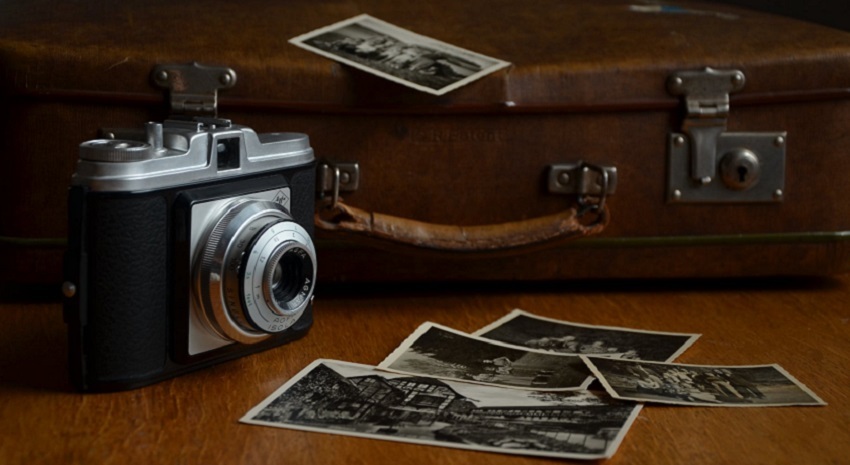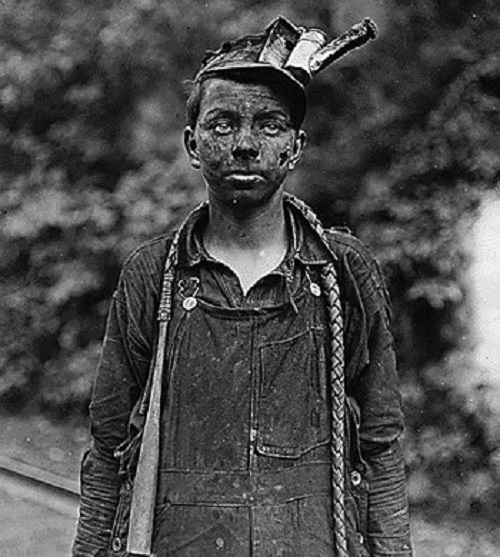Affecting Change

Photographic evidence has forced change
Dead Soldiers
On September 20, 1943, LIFE magazine published a photograph by George Strock of three American soldiers lying dead on a beach in Papua, New Guinea. Along with the photograph ran a commentary which included the following: "Why print this picture, anyway, of three American boys dead upon an alien shore? . . . words are never enough . . . words do not exist to make us see, or know, or feel what it is like, what actually happens.” Prior to this, photographs of American war casualties were not shown, but LIFE's publication of this photo came from the top down. In the book, 100 Photographs that Changed the World, from the publishers of LIFE, we read:
Franklin D. Roosevelt was convinced that Americans had grown too complacent about the war, so he lifted the ban on images depicting U.S. casualties. Strock’s picture and others that followed in LIFE and elsewhere had the desired effect. The public, shocked by combat’s grim realities, was instilled with yet greater resolve to win the war.

The famous Life Book which contains 100 photographs which it claims changed the world and the course of history
Photographs are powerful
Photographs are powerful, and for the last 100 years and more, photography has shaped and informed public opinion like almost nothing else. More specifically, photographs have been instrumental in the exposure and elimination of some of modern history's most notorious injustices.
Here are a few examples:
Child Labour
In 1908, the National Child Labor Committee hired Lewis Hine to capture photographs of some of the nation’s two million children working in mines, mills and on the streets. His 1910 "Breaker Boys" photograph from South Pittston, PA, is one of the pictures that helped "[sway] the public in a way cold statistics had not," and led to the enactment of laws banning child labor.

Breaker boy, Stanley Rasmus, Hughestown Borough, PA. Coal Co. Has been driving for one year. Works 7am to 5.30pm daily
Racial Violence
In 1955, a fourteen-year-old black boy named in Emmett Till, visiting a cousin in Money, MS, was dragged from his bed, brutally beaten and murdered by two white men. His killers were both acquitted by an all-white, all-male jury. Emmett's mother Mamie Till Bradley's decision to have an open-casket funeral for her son, and the resulting photograph published by Jet magazine "was a spark that helped mobilize the civil rights movement". Robin Kelley, chair of the history department at New York University, reflects on the events this way.
I know for me personally, when I first saw those images, years later, it was shocking to me. It was one of those unforgettable images that I think that every generation, years afterwards, will never forget.
Vietnam War
The brutal photographs that came to the U.S. from the conflict in Vietnam did as much as anything to turn public opinion against the war, and Don McCullin's photography of starving children in Nigeria helped spur, "the world community (to) intervened to help Biafra, and learned key lessons about dealing with massive hunger exacerbated by war-a problem that still defies simple solutions.

In 1973, Chick Harrity snapped one of the Vietnam War's most memorable images. It showed a baby girl, named Tran Thie HetNhanny, lying in a cardboard box next to her brother, who begged on the streets of Saigon. When the photo was published in February of that year, it inspired Americans to raise money to bring the baby to the US to undergo surgery to correct a congenital heart defect
Abu Gharib prison scandal
Most recently we have seen the dramatic influence of photography in regard to the Abu Gharib prison scandal. In a May 13, 2004, piece from the Pittsburgh Post-Gazette we read, "(While) Central Command announced in January that abuses at Abu Ghraib were under investigation...it was the release of the photographs that set off a whirlwind of controversy". Later in the article the Director of Documentary Studies at Duke University notes, “The way the photo makes us deal with these harsh realities is something that has been with us a while and helps explain why this is on the country’s front-burner now. If it wasn’t for the photographs, we wouldn’t be talking about it widely.”Similar sentiment is found in a May 13, 2004, article on the BBC News website. Award-winning British photographer and documentary filmmaker David Model comments that:
There is no form of words - even if describing the horror these pictures reveal - that could have elicited the kind of response felt when looking at them and the political shift that will follow. A photograph speaks to all of us regardless of culture or spoken language. There is a synchronicity between the nature of a still image and the way in which we remember events. There is something unique about the language of photography that contributes to the horror of these pictures. Memory itself is constructed through frozen moments in time and so a photograph slips serenely into our minds and is retained. Moving images can never be this potent. We cannot retain and carry with us a video-clip in the same way. We cannot have a two-minute news report always available in the top drawer of our minds ready to be glanced at, at any moment.
 | Abu Ghraib prison in Baghda, Iraq. The image of this event was one of the most prominent to be featured in the media coverage of the scandal. Satar Jabar was a prisoner at the prison during the early years of the U.S. led Iraq war (2003 - present). During his detention there he was subjected to psychological and physical torture by members of the U.S. military. This image and many others helped stop the abuses at the prison and bring the perpetrators to justice. |
Abortion photos prick the conscience
Photojournalists, and the media outlets who buy their work, have historically been the frontrunners in documenting and exposing acts of injustice. If abortion images showed up in LIFE and Time and Newsweek the way that pictures of other forms of human suffering do, abortion would absolutely go away. If abortion was shown in the classroom and in the newspaper and on the television, the abortion industry would crumble. But as long as the photographic evidence is kept under wraps and out of the public eye, people can ignore abortion. It is high time consciences was pricked, and almost nothing pricks the conscience like the photographic evidence that abortion is an act of violence that kills a baby.
Activism
In Whitehall, London, we asked this Human Rights and Greenpeace activist what her thoughts on abortion were. Before talking to CBR UK/Abort67 volunteer Ruth, she believed rape to be a justification for abortion. After a few minutes of talking to Ruth with pictures of what abortion does to an unborn child as the backdrop, she changed her mind.
Stephanie Gray of Canadian Centre for Bio-ethical Reform speaks on victim photography
TV panel discuss abortion victim imagery
BBC report on Abort67's work in the UK
Links
- Can pictures of aborted children help end abortion?
- Should pro-life activists use graphic images against abortion
- Censoring disturbing images
- Adventures while standing with abortion images
- New Jersey news cast react the abortion images
- I thank God I did not abort my baby
- New Yorkers see graphic photos in United Nations Display
- Photos discourage women to abort